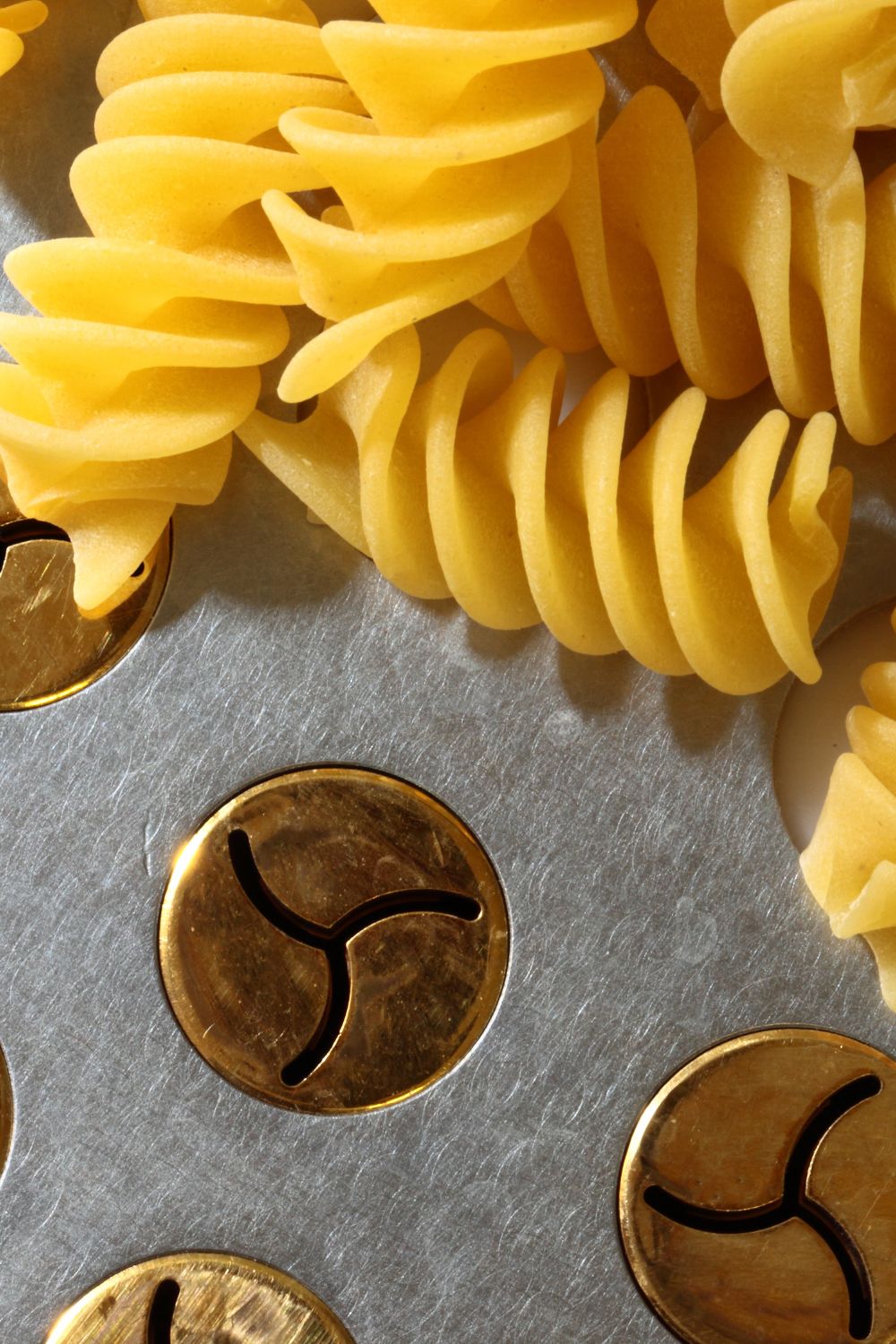Have you ever wanted to make pasta from scratch? An extruded pasta recipe allows you to create unique shapes and textures that elevate any meal. This type of pasta is made through a process that pushes dough through a mold, resulting in delightful varieties like penne, fusilli, and rigatoni.
In this guide, I will walk you through a straightforward extruded pasta recipe, sharing everything you need to know about ingredients, equipment, and tips for success. Whether you’re a novice or a seasoned cook, you’ll find that making your own pasta is both satisfying and enjoyable.
Extruded Pasta Recipe: A Step-by-Step Guide
Let’s dive into this extruded pasta recipe and get started on crafting your own homemade pasta!
Ingredients
Here’s what you’ll need:
- 2 cups all-purpose flour (plus extra for dusting)
- 2 large eggs
- 1/2 teaspoon salt
- Water (as needed)
- Olive oil (optional, for added richness)
Equipment Needed
To make extruded pasta, you will need a few specialized tools:
- Pasta extruder or pasta machine with an extrusion attachment
- Large mixing bowl
- Rolling pin (optional, if you’re rolling out dough)
- Knife or dough cutter
- Drying rack or clean kitchen towels for drying
Preparation Steps
Follow these easy steps to create your extruded pasta:
- Mix the Dough: In a large bowl, combine the flour and salt. Make a well in the center and add the eggs. Use a fork to beat the eggs and gradually incorporate the flour.
- Knead the Dough: Once the dough starts to come together, use your hands to knead it on a floured surface for about 8-10 minutes until smooth and elastic.
- Rest the Dough: Wrap the dough in plastic wrap and let it rest for about 30 minutes. This allows the gluten to relax, making it easier to extrude.
- Extrude the Pasta: Set up your pasta extruder. Cut the dough into smaller sections that fit your machine. Feed the dough through the extruder, choosing your desired shape.
- Dry the Pasta: Place the extruded pasta on a drying rack or clean kitchen towels. Allow it to dry for at least 30 minutes before cooking or storing.
- Cook the Pasta: Bring a pot of salted water to a boil. Cook the extruded pasta for 3-5 minutes, depending on the thickness. Fresh pasta cooks faster than dried.
Note on Recipe
It’s essential to adjust the moisture in your dough as needed; if it’s too dry, add a little water. If it’s too wet, sprinkle in a bit more flour. Achieving the right consistency is crucial for successful extrusion.
Nutrition Information
This recipe makes about 4 servings. Here’s a general breakdown of the nutritional content for one serving:
| Nutrient | Amount |
|---|---|
| Calories | 210 |
| Total Fat | 4g |
| Saturated Fat | 1g |
| Carbohydrates | 40g |
| Protein | 8g |
| Fiber | 2g |
Benefits of Homemade Pasta
Making pasta at home has several advantages:
- Freshness: You have control over the ingredients, ensuring the best quality.
- Customization: Adjust flavors and shapes to match your preferences.
- Healthier Option: You can use whole grain or gluten-free flour if desired.
Storage and Make-Ahead Tips
If you wish to prepare the pasta in advance, here are some options:
- Fresh Pasta: Store in an airtight container in the fridge for up to 2 days.
- Dried Pasta: Allow the pasta to dry completely, then store in an airtight container for up to 2 months.
Common Mistakes to Avoid
When making extruded pasta, here are some pitfalls to watch out for:
- Over-kneading: This can lead to tough pasta. Knead just enough until smooth.
- Inadequate resting: Skipping the resting period can result in difficult-to-extrude dough.
- Incorrect moisture levels: Either too dry or too wet dough can impede the extrusion process.
History of Extruded Pasta
Extruded pasta has a rich history, originating in ancient civilizations. The development of pasta-making technology allowed for the mass production of pasta, which became popular due to its convenience and versatility. Today, extruded pasta is a staple in many households across the globe.
With this extruded pasta recipe, you can explore the world of homemade pasta in your kitchen. Whether you enjoy it with a simple sauce or as part of a hearty dish, the result is a rewarding culinary experience that you can share with family and friends.
Frequently Asked Questions
What is extruded pasta?
Extruded pasta is made by forcing dough through a die, creating various shapes like penne or fusilli. This method gives pasta unique textures and cooking properties.
Can I make extruded pasta without a machine?
While a machine makes the process easier, you can also shape pasta by hand. It may take longer, but it’s still possible to create delicious pasta without specialized equipment.
How long does extruded pasta take to cook?
Freshly extruded pasta typically cooks in 3-5 minutes depending on thickness. Always taste to check for doneness.
Can I freeze extruded pasta?
Yes, you can freeze uncooked extruded pasta. Just ensure it’s fully dried before placing it in an airtight container or freezer bag for up to 2 months.
What flour works best for extruded pasta?
All-purpose flour is commonly used, but you can also experiment with semolina or whole wheat flour for different textures and flavors.

